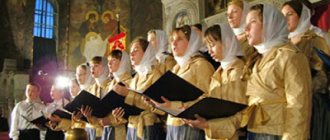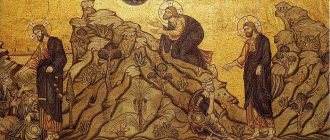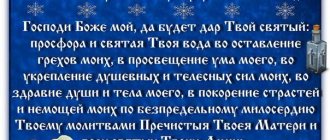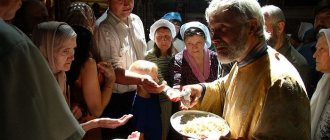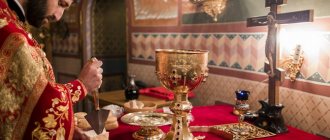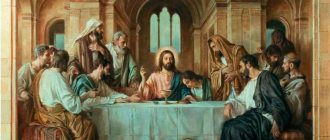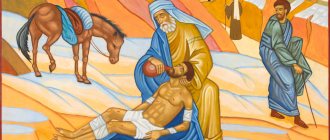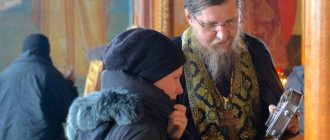In modern Russian, this catchphrase means the complete impossibility of performing any action. It came from biblical texts.
As the Gospel tells, one day a rich young man wanted to know how to save his soul, and began to ask Christ about it. Jesus answered that we must live according to the commandments; the young man said that he always observes them. Then Christ named one more condition: the young rich man must give all his property to the poor without reserve. Hearing this, the young man was greatly saddened and left, because even to save his soul he was unable to sacrifice his enormous fortune. According to the Gospel legend, it was then that Christ uttered the famous phrase: “Truly I tell you, it is difficult for a rich man to enter the Kingdom of Heaven; and again I say to you: it is easier for a camel to go through the eye of a needle than for a rich man to enter the kingdom of God" (quoted from the Greek synodal translation, Gospel of Matthew, 19:23-24; a similar statement is in the Gospel of Luke, 18:24-25 ).
For many centuries, these words of the founder of Christianity have caused spiritual discomfort in many readers of the Gospel - especially the wealthy, who want to enter the Kingdom of Heaven and live comfortably on earth. People have long tried to interpret Christ’s harsh statement in such a way as to soften its meaning. After all, if we take the phrase literally, the rich cannot have any hope of saving their souls: a camel cannot be pushed through the eye of a needle under any circumstances...
It has been repeatedly suggested that in this Gospel episode the words of Christ are conveyed incorrectly or misunderstood. Whether such an opinion is caused by the above-described mental discomfort, we do not undertake to say, and it does not matter. It is much more interesting to consider alternative readings.
Gate in Jerusalem
There is an assumption that the eye of a needle in the Gospel text should be understood not as a hole in a sewing needle, but as a special city gate. As if in ancient Jerusalem there was a narrow passage in the fortress wall, which, due to its small size, was called the “eye of a needle.” A person could get into it, but for a camel - a large animal - it was very difficult (although it no longer seemed as impossible as in the case of a sewing needle).
In the nineteenth century, during archaeological excavations in Jerusalem, part of an ancient city wall with a small entrance was discovered. Apparently, late travelers entered the city through it in the evening and night hours, when the large city gates were closed. The hole in the wall is currently located on the territory of the Orthodox Alexander Metochion in Jerusalem and at first glance serves as confirmation that Christ was not talking about a needle, but about a gate.
However, there is no evidence that the found passage was called the “eye of a needle” in ancient times. There is no mention in any ancient text of this or any other Jerusalem entrance with this name. So the gate version should be considered unfounded.
Not a camel, but a rope
But let's continue to consider versions of the “eye of the needle.” With the first version, I hope everything is transparent and clear. But she is not the only one. There are others too. For example, the second version, which can be found quite often in literature and in some treatises, also says that the term “eye of the needle” arose as a result of an incorrect translation of the Holy Scriptures.
The Holy Scriptures, as we all know, were written in Aramaic. The very language in which the Savior spoke and preached. And in it, in this language, the word “gamla” is found. I’ll tell you for those who know English - this is a relative of the word “camel”, that is, “camel”. But in Aramaic this word has two meanings: “camel” and “rope”. And in this regard, researchers claim that the same saying from the Gospel of Matthew ideally sounded like this: “It is easier to pass a rope through the eye of a needle than for a rich man to enter the Kingdom of Heaven.” This version is also supported by the fact that it was with similar “gamla”, that is, ropes, that luggage was tied to horse-drawn animals. And these researchers also agreed that Jesus spoke this parable in some house, and while looking for an analogy that would be understandable to those gathered, he saw a similar rope hanging on a nail on the wall. And when he saw it, he said the same saying known to all of us, which became part of the above parable.
By the way, in one of the museums of antiquity I saw an incredible assortment of needles that were used in the time of Jesus. And those needles that were used to sew, for example, carpets or thick bags, had an eye quite wide in diameter, about 15 cm, or even a little more. And it was quite possible to pass that same notorious rope through such a hole. So this version, which has no obvious contradictions, still lives and is passed on from mouth to mouth.
So, summing up the preliminary results, we can say that opinions are divided. One claims that the “eye of the needle” is a narrow entrance to the city, while the second says that the “eye of the needle” is actually the eye of one of the large needles, through which it is difficult, but realistic, to stretch the rope that was used to tie luggage to the backs of camels and other horse-drawn livestock.
Ship's rope
Another hypothesis looks more plausible. According to it, in the Gospel texts a change of word occurred: initially it was not about a camel (kamêlos in Greek), but about a ship's rope (kamílos). Over time, the pronunciation of these words in Greek became the same, which contributed to the confusion.
So, according to this version, Christ compared the possibility of saving the soul of a rich man to threading a thick rope through the eye of a needle. The matter is very difficult, but it does not give rise to a feeling of complete hopelessness.
However, most current scientists recognize this version as erroneous. In their conclusions they rely on data from Semitic languages.
Can a camel go through the eye of a needle?
Estimated reading time: 6 minutes.
In the Gospel there are words of Christ that confuse modern man: “It is easier for a camel to go through the eye of a needle than for a rich man to enter the Kingdom of God.” At first glance, this means only one thing - just as it is impossible for a camel to go through the eye of a needle, so a rich man cannot be a Christian, cannot have anything in common with God. However, is everything so simple?
Christ uttered this phrase not just as an abstract moral teaching. Let us remember what immediately preceded it. A rich Jewish youth approached Jesus and asked: “Teacher! What good thing can I do to have eternal life?” Christ answered: “You know the commandments: do not commit adultery, do not kill, do not steal, do not bear false witness, do not offend, honor your father and mother.” He lists here the ten commandments of the Law of Moses, on which the entire religious and civil life of the Jewish people was built. The young man could not help but know them. And indeed, he answers Jesus: “I have kept all this from my youth.” Then Christ says: “You lack one thing: go, sell everything you have and give to the poor, and you will have treasure in heaven; and come and follow Me.” The Gospel says about the young man’s reaction to these words: “Having heard this word, the young man went away sad, because he had great possessions.”
The upset young man leaves, and Christ tells the disciples those very words: “It is difficult for a rich man to enter the Kingdom of Heaven; and again I tell you: it is easier for a camel to go through the eye of a needle than for a rich man to enter the kingdom of heaven.”
This episode is easiest to interpret this way. First, a rich person cannot be a real Christian. And secondly, in order to be a truly true Christian - a follower of Christ - you must be poor, give up all your property, “sell everything and give it to the poor.” (By the way, this is exactly how these words of Jesus are read in many organizations that call themselves Christian, calling for a return to the purity of the Gospel ideals. Moreover, the very “poor” to whom the “rich” should “give everything away” are often the leaders of these religious organizations.)
Before finding out why Christ makes such a categorical demand, let’s talk about the “camel and the eye of a needle.” Commentators of the New Testament have repeatedly suggested that the “eye of a needle” was a narrow gate in a stone wall through which a camel could pass with great difficulty. However, the existence of these gates is apparently speculation.
There is also an assumption that initially the text did not contain the word “kamelos”, camel, but a very similar word “kamilos”, rope (especially since in medieval pronunciation they coincided). If you take a very thin rope and a very large needle, maybe it will still work? But this explanation is also unlikely: when manuscripts are distorted, a more “difficult” reading is sometimes replaced with an “easier”, more understandable one, but not vice versa. So the original, apparently, was “camel”.
But still, we should not forget that the language of the Gospel is very metaphorical. And Christ, apparently, meant a real camel and a real eye of a needle. The fact is that the camel is the largest animal in the east. By the way, in the Babylonian Talmud there are similar words, but not about a camel, but about an elephant.
There is no generally accepted interpretation of this passage in modern biblical scholarship. But whatever interpretation one accepts, it is clear that Christ is here showing how difficult it is for a rich man to be saved. Of course, Orthodoxy is far from the extremes of the above sectarian reading of the Bible. However, in our Church there is a strong opinion that poor people are closer to God, more valuable in His eyes, than rich people. In the Gospel, a red thread runs through the idea of wealth as a serious obstacle to faith in Christ and to a person’s spiritual life. However, the Bible does not say anywhere that wealth itself is a reason to condemn a person, and poverty itself can justify him. The Bible in many places, in different interpretations, says: God does not look at a person’s face, not at a person’s social position, but at his heart. In other words, it doesn't matter how much money a person has. You can waste away - spiritually and physically - both over gold and over several mite coins.
It is not for nothing that Christ valued the widow’s two mites (and the “mite” was the smallest coin in Israel) more expensive than all the other, large and rich contributions placed in the church circle of the Jerusalem Temple. And, on the other hand, Christ accepted the huge monetary sacrifice of the repentant tax collector - Zacchaeus (Gospel of Luke, chapter 19, verses 1-10). It is not for nothing that King David, praying to God, said: “You do not want a sacrifice, I would give it; but You do not favor burnt offerings. A sacrifice to God is a contrite and humble heart” (Psalm 51:18-19).
Regarding poverty, the Apostle Paul's Epistle to the Corinthians has a clear answer to the question of the value of poverty in the eyes of God. The Apostle writes: “If I give away all my substance, but do not have love, it profits me nothing” (1 Cor. 13:3). That is, poverty only has real value for God when it is based on love for God and neighbor. It turns out that it doesn’t matter to God how much a person puts in a donation mug. Another thing is important - what was this sacrifice for him? An empty formality – or something important that is painful to tear away from your heart? Words: “My son! Give me your heart” (Proverbs 23:26) - this is the criterion of true sacrifice to God.
But why then does the Gospel have a negative attitude towards wealth? Here, first of all, you need to remember that the Bible does not know a formal definition of the word “wealth” at all. The Bible does not specify the amount at which a person can be considered rich. The wealth that the Gospel condemns is not the amount of money, not the social or political position of a person, but his attitude towards all these goods. That is, who does he serve: God or the Golden Calf? Christ's words: “Where your treasure is, there your heart will be also” illustrates this condemnation.
When interpreting the Gospel episode with the rich young man, there is a risk of a literal, lecture-like understanding of what Christ said - said to this specific person. We must not forget that Christ is God, and therefore the Knower of the Heart. The eternal, enduring meaning of the Savior’s words in the case of the young man is not at all that a real Christian should give away all his property to the poor. A Christian can be poor, or maybe rich (by the standards of his time); he can work in both a church organization and a secular one. The point is that a person who wants to be a true Christian must give God, first of all, his heart. Trust Him. And be calm about your financial situation.
Trusting God does not mean immediately going to the nearest train station and giving all the money to the homeless, leaving your children hungry. But having trusted in Christ, you must, in your place, strive to serve Him with all your wealth and talent. This applies to everyone, because everyone is rich in something: the love of others, talents, a good family, or the same money. This is very difficult, because you really want to set aside at least a part of these riches and hide them for yourself personally. But it is still possible for the “rich” to escape. The main thing is to remember that Christ Himself, when necessary, gave everything for us: His Divine Glory and omnipotence and Life itself. In the face of this Sacrifice, nothing is impossible for us.
* The word “estate” in the Slavic language means not only a house, but also any wealth in general: money, livestock, land, etc. And in the Greek text there is the word “multiple acquisition.”
** V.N. Kuznetsova. Gospel of Matthew. A comment. Moscow, 2002, p. 389.
*** A burnt offering is the highest sacrifice to God, in which the entire animal was burned (except for the skin), unlike other sacrifices, where some pieces of the animal were left, which were then eaten.
On the screensaver is a fragment of a photo by Gabrielle Ludlow/www.flickr.com
Ill. Vera Makhankova

